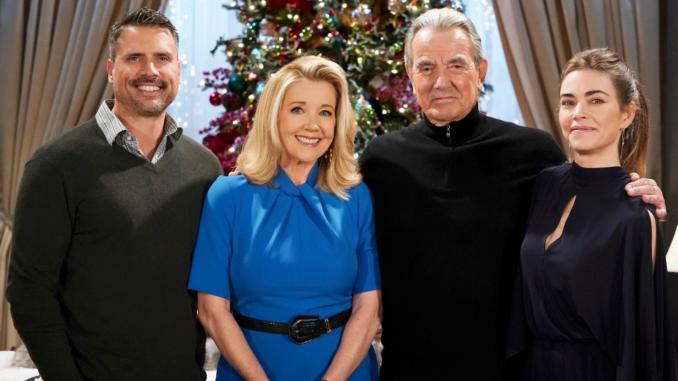
Soap operas have long been a staple of daytime television, providing viewers with an escape into worlds of glamour, drama, and endless intrigue. Among these iconic shows, The Young and the Restless (Y&R) stands out as a groundbreaking series that reshaped the genre and set new standards for storytelling. Since its premiere in 1973, Y&R has captivated audiences with its bold approach to drama, realistic characters, and willingness to tackle complex social issues. Its success over five decades reflects not just its ability to entertain but also its influence on the evolution of soap operas as a medium.
A New Narrative Style
Before Y&R debuted, many soap operas adhered to formulaic storytelling: overly dramatic, melodramatic plots that sometimes felt detached from reality. William J. Bell and Lee Phillip Bell, the creators of The Young and the Restless, sought to break away from these conventions. They envisioned a series that focused more on character-driven narratives and emotionally authentic storylines, and they succeeded in crafting a show that blended realism with high-stakes drama.
From the beginning, Y&R explored themes of love, betrayal, ambition, and redemption through its central families: the Newmans, Abbotts, and Chancellors. What set it apart was its slower, more deliberate pacing and its focus on the emotional depth of its characters. Rather than rushing through plot twists, Y&R gave its characters time to develop, allowing viewers to form deeper connections with them. This approach not only made the drama more impactful but also helped establish the series as a leader in the genre.
The Importance of Realism
Y&R revolutionized soap operas by infusing a sense of realism into its storytelling. The show tackled real-world issues that resonated with its audience, such as addiction, mental health, family dynamics, and corporate intrigue. For example, Nikki Newman’s struggles with alcoholism and Victor Newman’s ruthless business tactics were portrayed in ways that felt both grounded and larger-than-life. These narratives allowed the show to appeal to a broad audience, transcending the stereotypes often associated with soap operas.
The show also excelled in creating morally complex characters who defied traditional archetypes. Figures like Victor Newman, Phyllis Summers, and Jack Abbott are not simply heroes or villains; they are flawed individuals whose decisions often blur the lines between right and wrong. This complexity added depth to the drama and encouraged viewers to empathize with characters who might otherwise be seen as antagonists.
Visual Storytelling and Production Value
Another way Y&R distinguished itself was through its attention to visual storytelling. While earlier soap operas often relied on static sets and limited production values, Y&R invested in cinematic techniques, including dynamic camera angles, evocative lighting, and lush set designs. The show’s aesthetic sophistication elevated it beyond the traditional soap opera format, making it visually compelling and helping it appeal to a younger, more modern audience.
Costume design also played a significant role in enhancing the realism of the show. Characters’ wardrobes reflected their personalities and lifestyles, from Nikki Newman’s elegant dresses to Victor’s sharp suits and Phyllis Summers’ bold, fashionable looks. These details added authenticity to the world of Genoa City and reinforced the show’s commitment to creating a fully immersive experience for its viewers.

Breaking Barriers and Addressing Social Issues
One of Y&R’s most significant contributions to the soap opera genre was its willingness to address social and cultural issues. While many soap operas of the time shied away from controversial topics, Y&R embraced them, using its platform to spark conversations about issues that mattered to its audience.
For instance, the show’s portrayal of Neil Winters and the Winters family broke new ground for representation in daytime television. Neil’s storylines often dealt with themes of racial identity, family dynamics, and professional ambition, providing a voice for Black audiences in a genre that historically lacked diversity.
Y&R also tackled topics like mental health, domestic violence, and LGBTQ+ issues with sensitivity and nuance. Sharon Newman’s battle with bipolar disorder, for example, was portrayed in a way that educated viewers about the condition while also creating empathy for her character. By addressing these subjects, the show not only entertained but also educated and inspired its audience.
Influence on Modern Soap Operas
The legacy of The Young and the Restless is evident in the way it has influenced other soap operas and even primetime dramas. Shows like Days of Our Lives, General Hospital, and The Bold and the Beautiful have adopted many of the techniques pioneered by Y&R, including character-driven storytelling, sophisticated production values, and the integration of socially relevant themes.
Moreover, Y&R’s success proved that soap operas could be both popular and critically acclaimed. The show has won numerous Daytime Emmy Awards over the years, solidifying its reputation as a trailblazer in the genre. Its enduring popularity demonstrates that audiences continue to crave stories that balance drama with emotional authenticity.
Conclusion: A Lasting Legacy
The Young and the Restless has not only entertained millions of viewers over the past 50 years but has also transformed the soap opera genre itself. By prioritizing realism, emotional depth, and social relevance, the show elevated daytime television to new heights and set a standard that continues to influence storytelling across all mediums.
As Y&R moves forward, its impact remains undeniable. It is more than a soap opera—it is a cultural phenomenon that has shaped how we view love, betrayal, and the complexities of the human experience. Whether you’re a longtime fan or a newcomer to Genoa City, the legacy of The Young and the Restless is one that will endure for generations to come.
